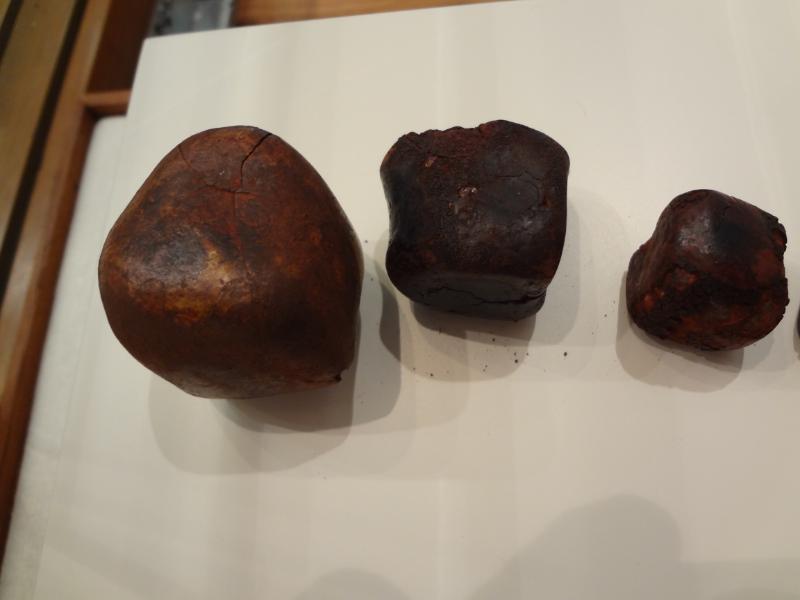Search in medicinals
Bovis Calculus
Bovine bezoar
牛黄 〔牛黃〕 niú huáng

Alternate English names: ox bezoar
Alternate Chinese names: 各一旺 gè yí wàng; 犀黄 xī huáng; 犀牛黄 xī niú huáng
Kingdom: Animal
Origin in PRC Pharmacopoeia: Bos taurus domesticus Gmelin. (PRC Pharmacopoeia)
Origin in unofficial sources: Bos taurus domesticus Gmelin*; Bubalus bubalis L.; Bos gaurus H. Smith; Bos grunniens L.
Use: Medicinal
Category: Heat-clearing agents / Heat-clearing toxin-resolving agents
Properties: Bitter; cool.
Channel entry: Liver and heart channels.
Actions and indications:
- Clears heat and resolves toxin: Painful and ulcerated swollen throat, mouth and tongue sores,
welling- and flat-abscesses (yōng jū), and clove sores (dīng chuāng). - Extinguishes wind and checks tetany: Warm heat disease and child fright wind with
vigorous heat effusion , clouded spirit, and convulsions. - Sweeps phlegm and opens the orifices: Wind stroke, fright wind, or epilepsy due to phlegm-heat obstructing the orifices of the heart; heat entering the pericardium in warm heat disease with clouded spirit, clenched jaw, and phlegm rale.
Dosage and method: Oral: 0.2–0.5g. Used in pills.
Warnings: Use with care in pregnancy. It is Unsuitable for patterns other than repletion heat. Both natural and artificial products are in widespread use. The natural product is extremely expensive, but use of the artificial product appears to carry a higher risk of adverse reactions such as diarrhea, allergic reactions, low blood pressure, and arrhythmias.
Notes: The Chinese pharmacopoeia also includes the following sources: Bubalus bubalis L.; Bos gaurus H. Smith; and Bos grunniens L.
Product description: This is the gallstone of cattle. Dǎn huáng (胆黄 Bovis Vesicae Felleae Calculus, gallbladder bezoar) comes in round lumps, 0.5–3 cm in diameter, while Guǎn huáng (管黄 Bovis Ducti Biliferi Calculus, duct bezoar) comes in tubular form or broken pieces. The exterior surface is earth brown in color and has a fine granular texture with a shiny surface that is cracked in places. It is light and brittle. When broken up, the annular layers of the structure can be seen. It is fresh to the taste, and gradually melts without sticking to the teeth. It is ground to a powder before use.
Quality: Chinese bezoar is the best.
Production area: Shǎnxī (Shaanxi) and Gānsū.
Etymology: The name niú huáng 牛黄, literally cattle yellow,
reflects the appearance of this item. The English bezoar, from the Persian pād-zahr, pād meaning protecting (against) and zahr poison, denotes a medicinally used animal calculus.